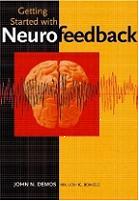
John Demos

|
John Demos
|
|
EEG Foundations Course #399): Bipolar vs. Monopolar montages
Participants will learn the difference between a monopolar and bipolar montage. One clinical example will be discussed.
Workshop #398): Getting Started with MiniQ and full QEEG brain mapping
A number of clinians are considering adding either MiniQ and QEEG topographical brain mapping to their practice. One demonstration and several examples will illustrate how protocols can be developed from normative data. This short presentation is suitable for those new to topographical brain mapping methodology.
Pre-Conference #403): Getting Started with Neurofeedback , BCIA training
Details:
EEG Foundations Course #399): Bipolar vs. Monopolar montages
What are the reasons to choose a bipolar montage instead of a monopolar montage? Why are monopolar montages sometimes called referential montages? How might the EEG data change if the montage is changed? How can we use EEG data to guide us when choosing between bipolar and monopolar montages?
Participants will be introduced to the concept of common mode rejection and impedance meters. We will explore the rationale of using bipolar montages with hyperactive children and at times adults. However, when using bipolar montages impedance readings between scalp mounted electrodes are kept within 2 ohms, why?
Demonstration: one candidate will have electrodes mounted in two ways. First with a monopolar (referential) and second with a bipolar (sequential) montage.
This presentation is suitable for newcomers to the field.
Workshop #398): Getting Started with MiniQ and full QEEG brain mapping
Topographical brain maps based upon normative data have long been used to guide neurotherapy protocols. Several key terms and skills must be mastered before effective use can be realized. The goal is to acquire meaningful data, transform that data into a brain map and lastly to interpret the map and to develop protocols. Some of the basic principles of map interpretation include:
• Gaussian Curve
• Standard deviation (z-scores)
• Frequency bandwidths
• Single Hertz bins
• Absolute data
• Relative data
• Asymmetry
• Ratios
• Coherence
• Peak Frequency
• Task analysis
Those who rely heavily upon normative data often inhibit just one specific frequency bandwidth in a neurologically significant areas. However, the application of this model appears on the surface to be one-dimensional. However, EEG neurofeedback training always results in a multi-dimensional effect. On the other hand, dynamic models of neurofeedback training using 3 or more thresholds can also be developed from topographical brain maps. Using topographical brain maps to guide protocol development in concert with the wealth of knowledge we have gained from clinical experience can prove to be a very powerful partnership.
For example, knowing coherence norms can help to improve our success with interhemispheric bipolar montages which often impact coherence readings.
Example #1—Adult male with combined depression, traumatic brain injury and labile mood. This example demonstrates a classic alpha asymmetry and temporal lobe damage from a car accident
Example #2—Adult male with depression, anxiety and inattention that is reflected in the EEG by excessive amplitudes of alpha at O1.
Two or three other examples will be considered as time allows.
In each case we will discuss how effective protocols can be developed from clinical norms while considering the testee’s neurology and prominent symptoms. For those who are just becoming interested in topographical brain maps this lecture will be very grounding.
Pre-Conference #403): Getting Started with Neurofeedback , BCIA training
Contact Info:
John Demos
PO Box 325
Westminster, Vermont 05158
phone: